There are many signs that your wheel bearings need replacing. Do you know what to look for?
Let’s look at the symptoms of bad wheel bearings and how to replace them, so you can avoid further damage to your car, costly repairs, and any possibility of accidents.
Wheel Bearings Definition
Wheel bearings are found between the brake disk/drum and the drive axle. It is a one-hub unit that includes the ABS (Anti-lock Brake System) wheel speed sensor, hub, mounting flange and wheel bearings.
They are an essential component with the steering, suspension system, and the car’s braking system; together, they make your wheels turn.
Wheel bearings are found in the race, a housing containing the grease in which the bearings are packed.
The race is a metal ring, sealed, so it is waterproof and keeps the grease on the steel ball or tapered ball bearings.
Each wheel has a race in its hub. Wheel bearings have tremendous strength; they hold the weight of the car.
Wheel bearings need replacing between 85,000 and 100,000 miles.
Symptoms of Bad Wheel Bearings
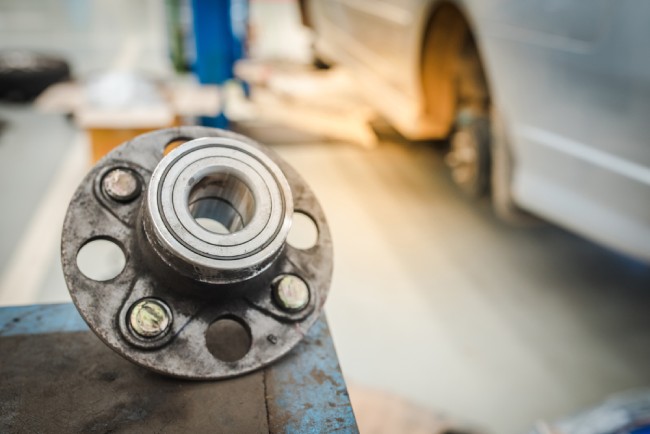
Modifications to the Car
Use manufacturer-recommended tires. Avoid slicks and broader or narrower tires that are recommended.
Damage from Impact or Rough Roads
Rough roads can cause impact damage, especially when the car hits a large pothole, speed bump, or curb. Any one of these can damage the wheel bearings.
Weather Conditions
Dust, mud, road salt, and water can get into the metal ring and cause the grease in the ring to break down, wearing down the bearings. Avoid going through deeper water and mud while driving!
Weight On the Car as You Drive
As you turn a corner or on a curve and winding road, the car’s weight shifts to the other side. You will hear and may feel the bad wheel bearing at this time.
Bad Shock Absorbers and Unbalanced Wheels
Shock absorbers and suspensions that are too stiff can create a higher load, and poorly balanced tires, speeding up the wheel bearing damage.
Use Manufacturer recommended parts to avoid these issues.
Cheap Wheel Bearings
If you buy the cheaper wheel bearings, it may put undue strain on the bearings resulting in heating the wheel bearing casing, which will damage the wheel bearings.
Instead, buy good quality, manufacturer-recommended parts. The cheaper bearings will only have half the life of a manufacturer’s bearing.
Using the wrong tools or older parts
Using the wrong tools or tools with greater strength than needed for the job can cause damage to the wheel bearings.
When you replace a car part, use new screws, clips, etc., so they won’t jeopardize the wear and tear on the new parts.
Replace the Wheel Bearings When:
Hearing a Clicking noise
If you hear a clicking sound in the tire that gets louder as you go faster, this could be the wheel bearings.
Check Engine Light, ABS, and Traction Lights Are On
If the wheel’s speed sensor, ring, tire, and wheel wobble or your ABS light goes off and on, the ABS light will stay on. This needs the attention of a professional now.
Growling and Squealing
Squealing or growling are the sounds associated with bad wheel bearings, or a noise that gets louder as you go faster.
Listen carefully to figure out the exact location of the bad bearings.
Sounds Like Humming
Do your tires hum? This could be the bearings or a bigger problem like the CV joints. Do Not wait to have this checked out!
Neutral Gear or Clutch Issue
Grinding while shifting or turning means the wheel-end system is already damaged, and the wheel bearings have roller (raceway) damage. Do not wait to get this fixed!
Car is Pulling to One Side
When you brake, if the car pulls to the left or right, this could be bad bearings.
The good news is the side it pulls to is the side with the bad bearings so it will be easy to find and fix.
Sometimes this pulling can be caused by a damaged rotor or brake caliper. But it will still needs to be checked!
Loose Steering
If your steering wheel has a lot of play (the steering is not as precise as usual or not responding as it should), your bearings could be bad.
If the play worsens as your speed increases, you may need your wheels aligned. Do not delay getting this checked!
Brake Pads and Rotors Wear Unevenly
Brake pads and rotors should wear out evenly on both sides. When the wear is uneven, it may be due to bad wheel bearings.
Tires Wear Unevenly
Does one tire wears out faster than the others, it could be a symptom of bad wheel bearings. But it could also be a worn-out suspension, poor tire alignment, or damage to your car.
Having it checked out will give you peace of mind and stop further damage.
Vibrating Steering Wheel
It could be bad wheel bearings if the steering wheel vibrates and gets worse as your car goes faster or as you brake; it pulls to the left or right.
But you could have a flat spot on a tire, and the car’s suspension may also be bad.
Wheel Bearing Noise or Rear Differential Noise
If you hear a howling noise when you are slowing down, it could be loose pinon gear bearings preload. A howling noise as you speed up could be a problem with the gears.
The howling noise is caused by worn-out gears and will cause damage to all these things if ignored.
Wheel is Wobbly
A wobbly wheel is a sign that the tire could come off the car. The car needs to be put on a machine so a technician can “shake” the wheel to see if the tire is loose.
You may not feel that the tire is loose while you drive. A wobbly wheel could be a hub assembly issue and needs immediate repair.
Wheels Don’t Spin
Once the wheel bearings are shot, your tire may no longer spin. This can happen while you are driving. This is one reason you don’t want to put off getting the tire checked.
Diagnosing Wheel Bearing Noise
Weight
When you turn your car to the left, the car’s weight is distributed to the right side, making it harder to diagnose the bearing issue.
Acceleration
Speeding causes wheel bearing noises to get louder; this is a good way to diagnose the problem but should not be the only way.
Get in There and Look Around
Jack up the car and place the safety jacks in position so you can test a few things and get a good lock and feel for the problem. Once the car is jacked upsafely, you can inspect the tires, brakes, and suspension.
Drive and Steer Left and Right
You can take your car on a winding road and drive at normal speed, as you Go around the curves and turning the wheel to the left, listen for the grind, click, or howling.
As you turn the wheel and the weight is distributed to the opposite side, you should hear and feel the bad wheel bearing. This will help determine what side the bad wheel bearing is on.
Don’t feel bad if you can’t tell the exact tire; a mechanic can narrow that down.
Wheel Bearing Noise Diagnoses
Get in the car and start driving; once you hit between 20 – 50 mph, you should hear the clicking and feel the shimmy in the car.
As you increase your speed, listen to the noise at different speeds, low pitch noise at a lower speed getting high pitched as you accelerate.
Knowing the pitch and the speed will help you diagnose later.
Your ABS light may come on because the system knows something is wrong but can’t read a code.
It is hard to diagnose the problem just from the noise.
Follow these steps:
- Safely jack the car up using a flat surface, floor jack, and insert safety jacks under the back of the car.
- Place your hands on both sides of the wheel and shake (not hard) the tire left to right.
- Then grab the same tire with both hands, one the top and bottom of the tire, and shake.
- Finally, shake all four tires to ensure you have the right one. The tire with the most play in it probably has the bad wheel bearing.
Do the spin test: Spin the tire (direction doesn’t matter), listen for the click. You may hear a shoosing sound; this is probably the rotor as the wheel turns.)
Continue doing this until you find the tire that doesn’t spin or clicks loudly on the spin test. This is the one that will need the new bearing.
Can You Drive Long with Bad Wheel Bearings?
No! It is unsafe; it can lead to the wheels not turning, which is dangerous when driving.
It will not take long from the time you hear the noises until the damage is done, do not wait!
Only drive the car home and to the mechanic. Avoid speeding.
Bad Wheel Bearings: Risks When Driving
Wheel Can Come Off the Car
Wheel bearings hold the tire to the car; any amount of play in the tires can cause it to come off the car.
Tires Overheat and Explode
The friction and heat of the bad wheel bearings can cause your tire to overheat and in some situations explode.
Unstable Steering Wheel
Loose feel in the steering wheel makes it very difficult to steer at times.
Brakes Fail
You can get a soft brake, where the piston has to travel farther to apply the brake causing slower braking at higher speeds.
Causing Suspension Damage
Bad wheel bearings can stress a car’s suspension and drivetrain hardware.
Bad Wheel Bearings Replacement
Tools
- Ratchet and sockets
- Screwdriver
- Floor jack
- Rubber mallet
- Two wheel chocks
- Torque wrench
- Gloves
- Bearing grease
- Pliers
- Two safety jacks
- Wire coat hanger
Preparing the Car
Part 1
Step 1: Chocking the Wheels
Make sure you are parked on an even surface, with the car in park and the parking brake on.
You will need to chock the tires (a rubber wedge placed behind the tire), put the wheel chock behind the set of tires you are not working on (if you’re doing front tires, the chocks go behind the back wheels.)
Step 2: Lug Nut Loosening
Loosen the lug nuts BEFORE you jack up the car. Do not remove them.
Step 3: Place your floor jack under a sturdy part of the car and jack it up so the wheel is easy to get off and on; placing the safety jacks under the car (be sure to check the owner’s manual for proper placement.)
Step 4: Lug Nut Removal
Remove the lug nuts, place them on a magnet or in a bowl, so they do not get lost.
Step 5: Removing the Tire
Remove the tire, set it in the ground, lay it on the side, and can use it as a seat while you finish the repair or put it off to the side.
Part 2: Wheel Bearing Installation
Step 1: Brake Caliper and Bracket Removal
Using the ratchet and socket, loosen the caliper and bracket, taking them off the spindle.
Remove the caliper with the screwdriver.
Make sure the caliper is supported so it won’t damage the brake hose.
Use the coat hanger to hook under the car’s carriage and suspend the hosing.
Step 2: Outer Wheel Bearing Removal
When working on a truck, you will need to take off the dust cover (this may need to be pried off.)
With the pliers, remove the cotter pin and retaining nut sliding the rotor forward and remove the inner wheel bearing (the smaller one) and place the retaining nut on the spindle
Step 3: Rotor and Inner Wheel Bearing
Grasping the rotor with both hands, pull; if it doesn’t budge, you may have to help it using the rubber mallet. Do not hit it too hard!
Pull the rotor off the spindle, catching the inner wheel bearing on the retaining nut.
Remove the grease seal and bearing from the rotor, placing the rotor somewhere safe with the backside facing up.
Step 4: Lubing the Casing with Grease
With a gloved hand, scoop up some of the bearing grease onto your palm and rub it onto the new wheel bearing case by running through your greased palm and forcing the grease into the casing.
Step 5: Installing New Wheel Bearings
Into the back of the rotor, place the new bearing, pushing grease into the cavity.
On the new larger bearing, put the new greased seal on and push the rotor onto the spindle.
If needed, use the rubber mallet to tap it into place lightly.
Pack the smaller new bearing with grease, placing it inside the rotor on the spindle.
Step 6: Don’t forget the Cotter Pin
Turn the rotor counterclockwise while turning the retaining nut until it is snug, then give it a turn that is ¼ past snug.
Put the new cotter pin in place.
Step 7: Replace the Hub: Unbolt it First
Some wheel bearings are permanently sealed, so the rotor will mount on the hub that already has the pressed wheel bearing.
Bearing assemblies for front and rear non-driven axles mount between the wheel hub and simple spindle.
Step 8: Check the Spindle, Remove if Needed
You may need to take the spindle and the new wheel bearing to a mechanic. If the bearing is pressing into the spindle, they can puch out the spindle and bearing.
Once finished, you can continue replacing the new part.
Part 3: Reassemble
Step 1: Reinstalling the Rotor and Caliper
Using the ratchet and socket, replace the rotor and caliper.
Step 2: Put the Tire Back On
Put the tire back on, and hand screw the lug nuts in place.
Use the floor jack to hold the car while taking the safety jacks from under the car and then lower the car until the tires are on the ground.
Step 3: Finishing the Job
After tightening the lug nuts with the torque wrench, lower the car the rest of the way to the ground and remove the floor jack.
How Much Time Does it Take to Replace a Wheel Bearing?

Keeping in mind that there are a lot of parts to be removed, appropriately greased, and replaced, it should take about one and a half to two hours from start to finish.
Wheel Bearings Installation Tips
- Use the wheel chock on the passenger rear wheel when fixing the front driver wheel.
- Refer to the owner’s manual for the right places to place the floor jack under the car.
- Use a wire hanger as a hook to secure the brake line after removing the caliper.
- Scoop of bearing grease in your gloved palm to rub it into the casing.
- Place the bearing seal in place, and tap it with the rubber mallet to secure it.
- Use a ratchet to unbolt the hub from the spindle on an unboltable hub.
How Far Can I Drive on Bad Wheel Bearings?
While driving on wheel bearings, you suspect need to be replaced; it is never a good idea to let these issues go too long.
You may be risking drive axle and steering assembly damage to your car and the lives of your family when you put off getting these checked into.
Could it be a CV Joint?
Attached to the wheels driveshaft is the outer CV Joint; the inner CV joint is attached to the transmission.
When your wheel bearings are bad and you ignore the problem, it can damage the CV joint.
A sure sign that the CV joint needs repairing is a ratcheting sound. A popping, clicking, or snapping sound from the wheel may be an outer CV joint problem.
Likewise, a knocking noise could n be more play than usual in the CV joint.
The Driveaway
With the help of this blog, you can identify sounds and symptoms of faulting wheel bearings. Then use the instructions and tips to fix the problem and maintain your vehicle to prevent the symptoms of bad wheel bearings from happening again.


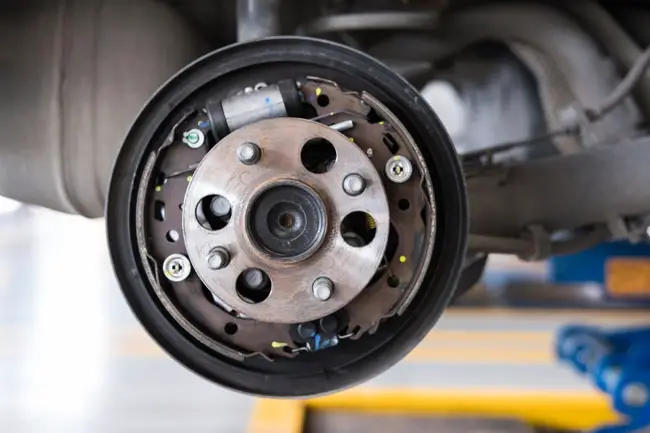
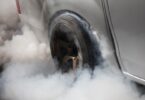

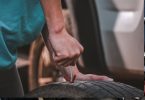

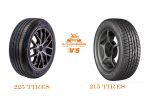


Leave a Comment